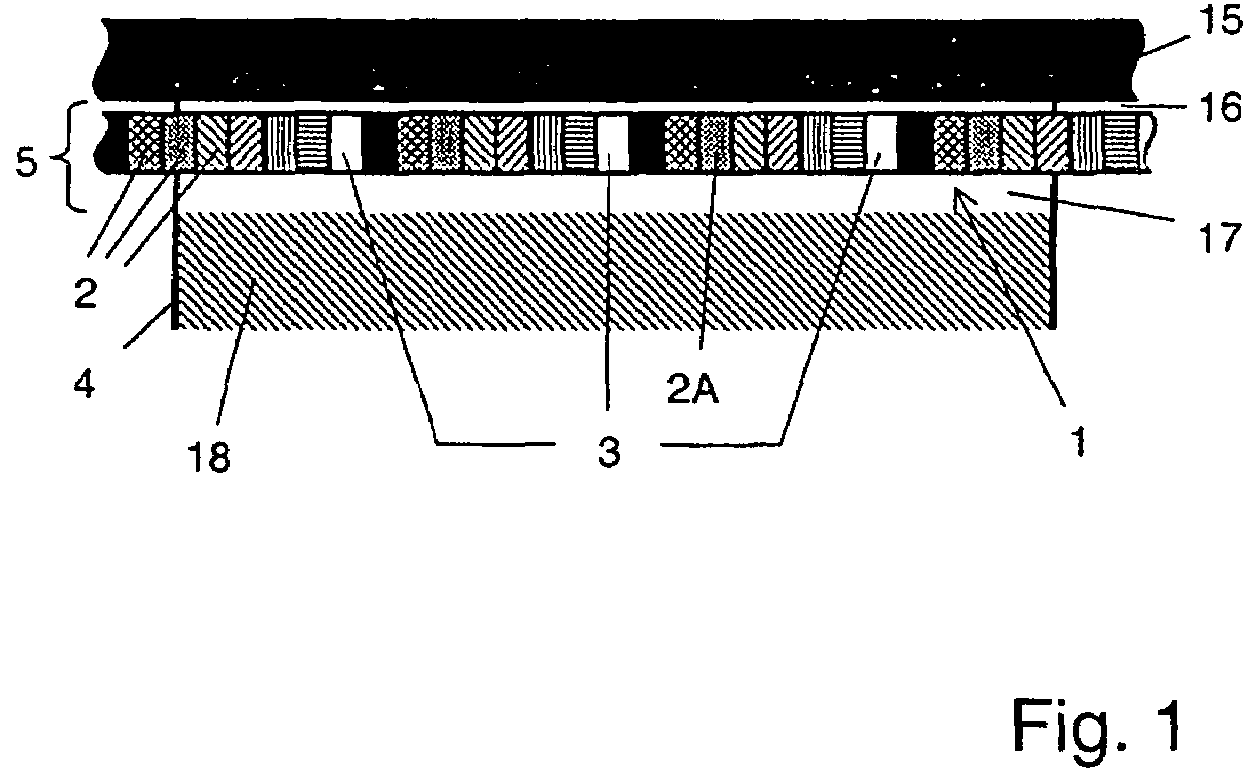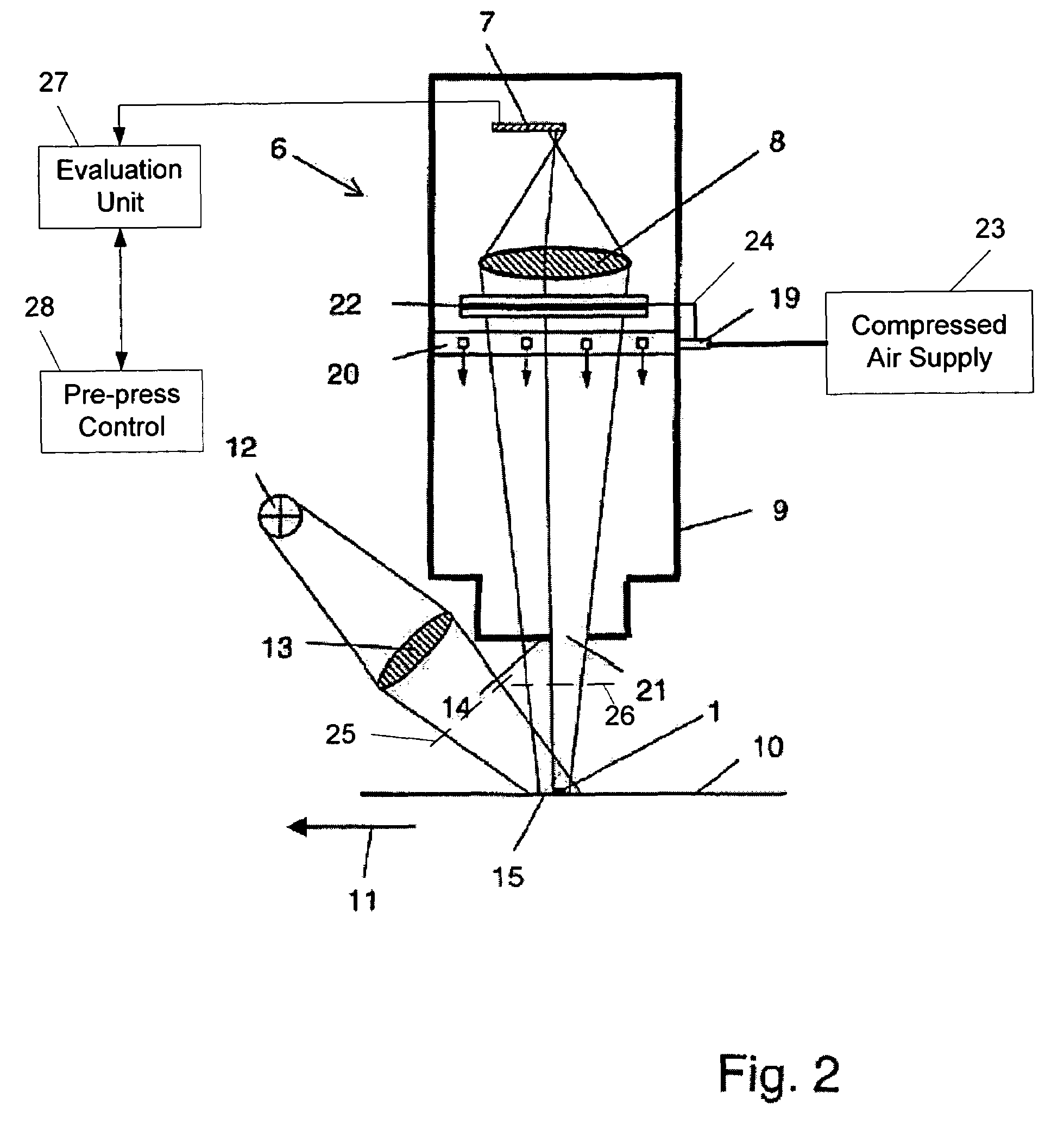Apparatus and method for acquiring and evaluating an image from a predetermined extract of a printed product
a technology of predetermined extract and image, which is applied in the field of apparatus and method for acquiring and evaluating an image from a predetermined extract of a printed product, can solve the problems of inability to ensure the accuracy of measured data during relatively long operation, inability to accurately reference the reference for zero light intensity, and inability to reduce measurement errors. the effect of reducing the cost of apparatus and high speed
- Summary
- Abstract
- Description
- Claims
- Application Information
AI Technical Summary
Benefits of technology
Problems solved by technology
Method used
Image
Examples
Embodiment Construction
[0033]The application of the present invention in a preferred embodiment assumes that a control strip is provided on the printed product to be characterized. In the case of sheet printing, the control strip is printed on each sheet. In the case of an endless printing material web, the control strip is printed onto the web at regular intervals. Part of such a control strip 1 is illustrated schematically in FIG. 1. The strip 1 extends transversely with respect to the transport direction of the printed products in the press and, in its longitudinal direction, contains a periodic sequence of individual rectangular measuring areas 2.
[0034]The measuring areas are printed with different test patterns, each of which is designed for the determination of a specific characteristic variable by measurement. Typical examples of such test patterns are full-tone prints in the primary colors cyan, magenta, yellow and black for determining the respective ink densities. Furthermore, half-tone prints i...
PUM
| Property | Measurement | Unit |
|---|---|---|
| pressure | aaaaa | aaaaa |
| dark-current intensity | aaaaa | aaaaa |
| area | aaaaa | aaaaa |
Abstract
Description
Claims
Application Information
 Login to View More
Login to View More - R&D
- Intellectual Property
- Life Sciences
- Materials
- Tech Scout
- Unparalleled Data Quality
- Higher Quality Content
- 60% Fewer Hallucinations
Browse by: Latest US Patents, China's latest patents, Technical Efficacy Thesaurus, Application Domain, Technology Topic, Popular Technical Reports.
© 2025 PatSnap. All rights reserved.Legal|Privacy policy|Modern Slavery Act Transparency Statement|Sitemap|About US| Contact US: help@patsnap.com



